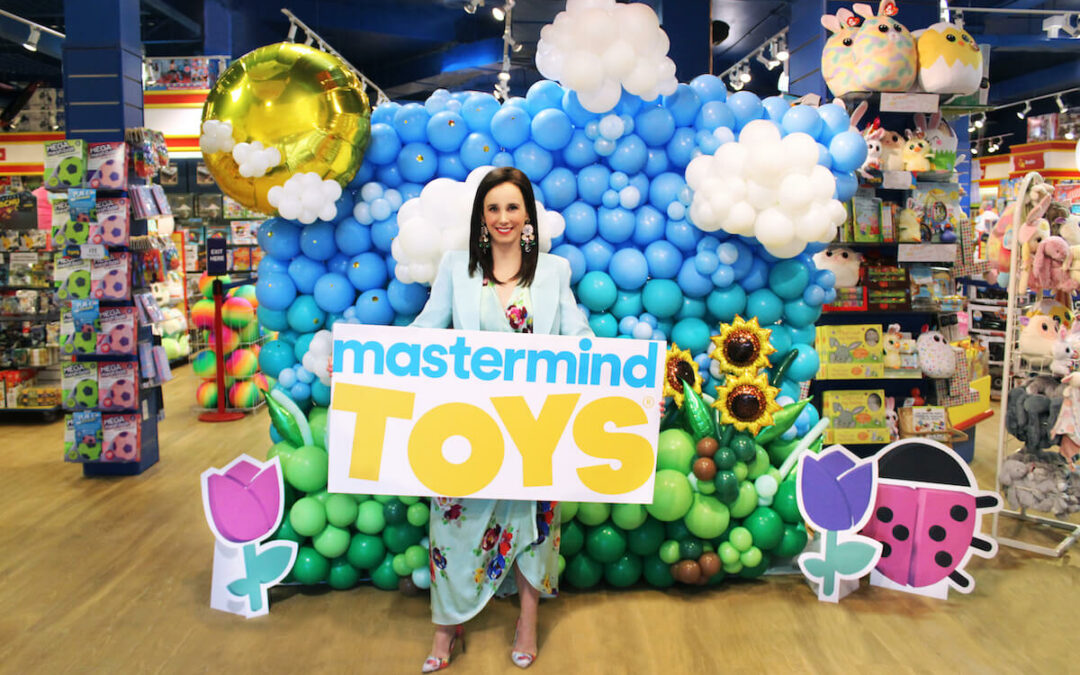
The future of frontline leadership? Empathy
The last couple of years have been challenging for retailers. Government-imposed restrictions and social protocols have impeded the ability of many merchants to keep their doors open. Now, as those restrictions loosen and we slowly and methodically move toward a new kind of “normal,” the industry is faced with a different kind of challenge in the form of a talent shortage.
Thanks to “The Great Resignation,” scores of retail workers have left their jobs and, in many cases, the industry altogether. It’s causing headaches for many, leaving merchants scrambling to fill roles within their stores. However, it’s also brought some organizations to realize just how important their frontline staff are in helping them achieve their goals and objectives.
And, according to Sarah Jordan, CEO of specialty toy and book retailer Mastermind Toys, it’s imperative for retailers to lead their teams with empathy and compassion.
“Over the past two years, Canadians have faced a variety of impacts and new experiences as a result of the pandemic,” she says.
“Companies must empower frontline employees by leading with empathy and compassion to inspire innovation and creativity. Leaders need to be considering how there’s strength in being empathetic and courage in being compassionate. These are the qualities customers and employees are seeking now more than ever.”
In order to continuously improve the culture at Mastermind Toys – a retailer that employs a workforce across its head office, warehouse, and 68 stores coast-to-coast – Jordan ensures that she and her team consistently facilitate touchpoints that allow her to stay connected to employees of the brand. Quarterly employee surveys, Town Halls, and Nudge used daily by their “Play Experts” (a.k.a. store associates), provide an incredible opportunity for employees from all levels to come together, share ideas, and better understand the ways in which their colleagues contribute, leading to a deeper collective appreciation for the work being done.
Jordan suggests that empathetic leaders also have a profound impact on the performance of frontline employees and the overall corporate culture and values. But the benefits of creating a culture of empathy and compassion run even deeper. According to a report by Development Dimensions International, leaders who approach their jobs and engagement with employees with empathy display interaction skills that are more effective than those who do not practice empathy. The report indicates extremely strong links between a leader’s levels of empathy and the quality of their decision-making, coaching, engagement, planning and organizing, and overall performance.
Here are 4 ways Mastermind Toys’ empathetic frontline leadership motivates and inspires employees:
1. It inspires creativity, innovation, and performance
When it comes to employee performance, a recent study by Businessolver reveals that 72% of employees believe that empathy drives motivation, while 84% of CEOs believe that it drives better business outcomes. According to Jordan, it does both.
“The impact of an empathetic mindset is tremendous and goes a long way toward shaping and enhancing an organization’s corporate and workplace culture,” she says. “ It impacts every corner of the business, helping to motivate employees, drive innovation, inspire creativity and reach business results together.”
2. It boosts employee engagement
In addition to enhanced employee performance, one of the more meaningful benefits of empathetic frontline leadership is a highly engaged group of employees. It’s a benefit that Jordan says can really galvanize a team of individuals, adding that the critical support is strong communication (case in point: over 90% of Mastermind Toys employees reported that they understand the business strategy in a recent employee survey).
“Constant communication with frontline employees definitely helps to keep them engaged,” she asserts. “But, in retail especially, employees become trendspotters that drive innovation and inspire change when there is that trust in place and open lines of communication. And, in building an engaged community, you create an environment where people are excited to be part of the team.”
3. It fosters honesty and transparency
According to Jordan, ensuring that lines of communication are always open is an important aspect of an empathetic approach to leadership. It also makes it easier to elicit feedback from employees, encouraging inclusiveness and trust.
“At Mastermind Toys, we pride ourselves on embracing a culture of co-creation, where we ask employees for feedback, really listen to it, and then communicate back how they have been a part of our innovation. Co-creating with your employees is most effective when you lead with empathy and compassion because it gives your employees permission to be honest and transparent and the space to bring their authentic selves to work. In our latest employee survey, we heard 90% of our employees say they trust their supervisor – a number we believe represents the work we’ve put into ensuring we create an open and safe environment.”
4. It drives greater retention
Leading with empathy doesn’t simply help to engage employees, however. It also serves as an incredibly powerful tool to help retain that talent.
“When you can create an environment that’s inclusive, providing employees with work-life balance and flexibility when it comes to scheduling, you earn their trust,” says Jordan. “We were provided an example of this over the past holiday season. When the industry was concerned with labour shortages, we welcomed over 75% of our seasonal shift leaders back to Mastermind Toys for another holiday season.”
Tips for leading with empathy
According to Jordan, if a retail leader is able to cultivate and nurture a culture of empathy and compassion within their workplace for frontline employees, the rewards are immense. The employee experience drives the customer experience – encouraging and empowering frontline teams will keep your customers coming back.
In order to start down this path, Jordan has three pearls of wisdom to offer:
1. A culture of care and compassion is established by the CEO
“The CEO needs to be the leading brand ambassador – the person who brings the company values to life and sets priorities that are consistent with the brand purpose. When this is the case, the objectives of the brand and its vision and purpose motivate employees, inspiring them to come together as a team to deliver innovation and impact.”
2. Genuinely listen to your employees, and then act with intention and speed
“Actively listen to employee feedback to uncover insights and then create a roadmap of next steps to reinforce that their contributions matter. The follow-through plan and execution by leadership is just as important as getting employee buy-in and it encourages exponentially more insights shared. Employees are often simply looking to see progress, not perfection, from their employer.”
3. Leading with empathy and compassion lets your team play to their strengths.
“As a leader of Mastermind Toys, I have found the most rewarding part of my job is the opportunity to elevate our culture by showing up as an authentic leader and encouraging others to do the same. When employees can be authentically themselves, their strengths shine through.”
—
Though empathy and compassion are not often at the top of the list of skills referenced when assessing the strengths of any leader, they are increasingly coming under greater focus and consideration as a new leadership style whose significance has been amplified by impacts of the pandemic. And, it’s a leadership style that Jordan believes is exactly what today’s workforce deserves.
“People are looking for purpose-driven organizations and leaders to work for. Over the pandemic, Mastermind Toys formally articulated our purpose and values that have always rung true within the company, but it was important that we strengthened these pillars of who we are by clearly communicating them to our people. We are more than a toy store – we are Canada’s Authority on Play, whose purpose is to inspire generations of lifelong learners through the power of play. When employees understand your purpose, and the role they can play in achieving this purpose through living out your values, it develops a greater sense of connection across your teams and builds your unique company culture.”

